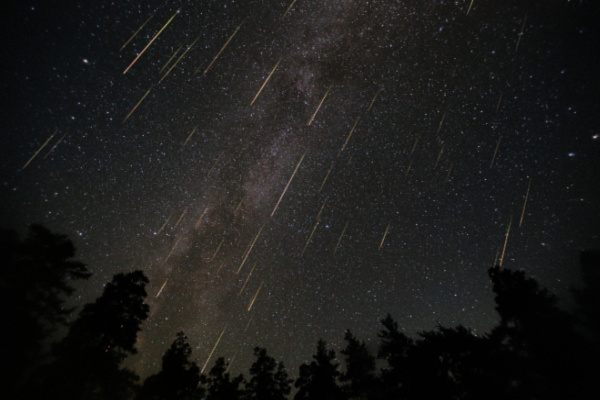Rocky debris blasted away from the tiny asteroid Dimorphos when NASA’s DART spacecraft intentionally slammed into it in 2022 could create the first human-made meteor shower known as the Dimorphids, new study has found.
As AccuWeather reports, the space agency planned the DART, or Double Asteroid Redirection Test, mission to carry out a full-scale assessment of asteroid deflection technology on behalf of planetary defense. NASA wanted to see whether a kinetic impact — such as crashing a spacecraft into an asteroid at 13,645 miles per hour (6.1 kilometers per second) — would be enough to change the motion of a celestial object in space.
Neither Dimorphos or the large parent space rock it orbits, known as Didymos, pose a danger to Earth. Still, the double-asteroid system was a perfect target to test deflection technology because Dimorphos’ size is comparable to asteroids that could threaten our planet.
Astronomers have used ground-based telescopes to monitor the impact’s aftermath for nearly two years, and they determined that the DART spacecraft did successfully change the way Dimorphos moves, shifting the moonlet asteroid’s orbital period — or how long it takes to make a single revolution around Didymos — by about 32 to 33 minutes.
But scientists also estimated the intentional collision generated more than 2 million pounds (nearly 1 million kilograms) of rocks and dust — enough to fill about six or seven rail cars. Where exactly in space all of that material will end up has remained an open question.
Now, new research suggests fragments of Dimorphos will arrive in the vicinity of Earth and Mars within one to three decades, with the possibility that some debris could reach the red planet within seven years. Small debris could also reach Earth’s atmosphere within the next 10 years. The Planetary Science Journal has accepted the study for publication.
“This material could produce visible meteors (commonly called shooting stars) as they penetrate the Martian atmosphere,” said lead study author Eloy Peña Asensio, a postdoctoral researcher for the Deep-space Astrodynamics Research and Technology group at Italy’s Polytechnic University of Milan. “Once the first particles reach Mars or Earth, they could continue to arrive intermittently and periodically for at least the next 100 years, which is the duration of our calculations.”
—
Photo Credit: Makarov Konstantin / Shutterstock.com
